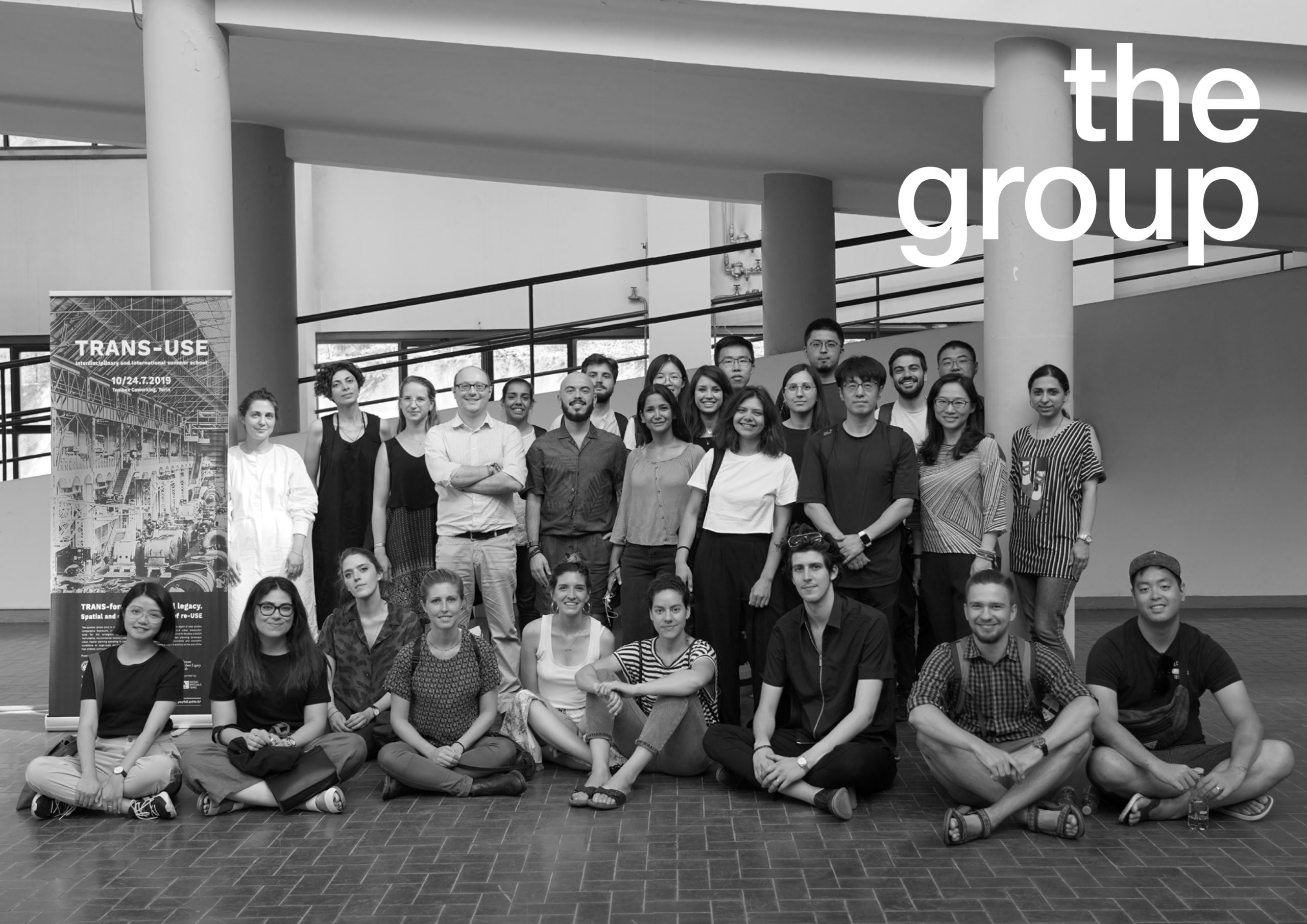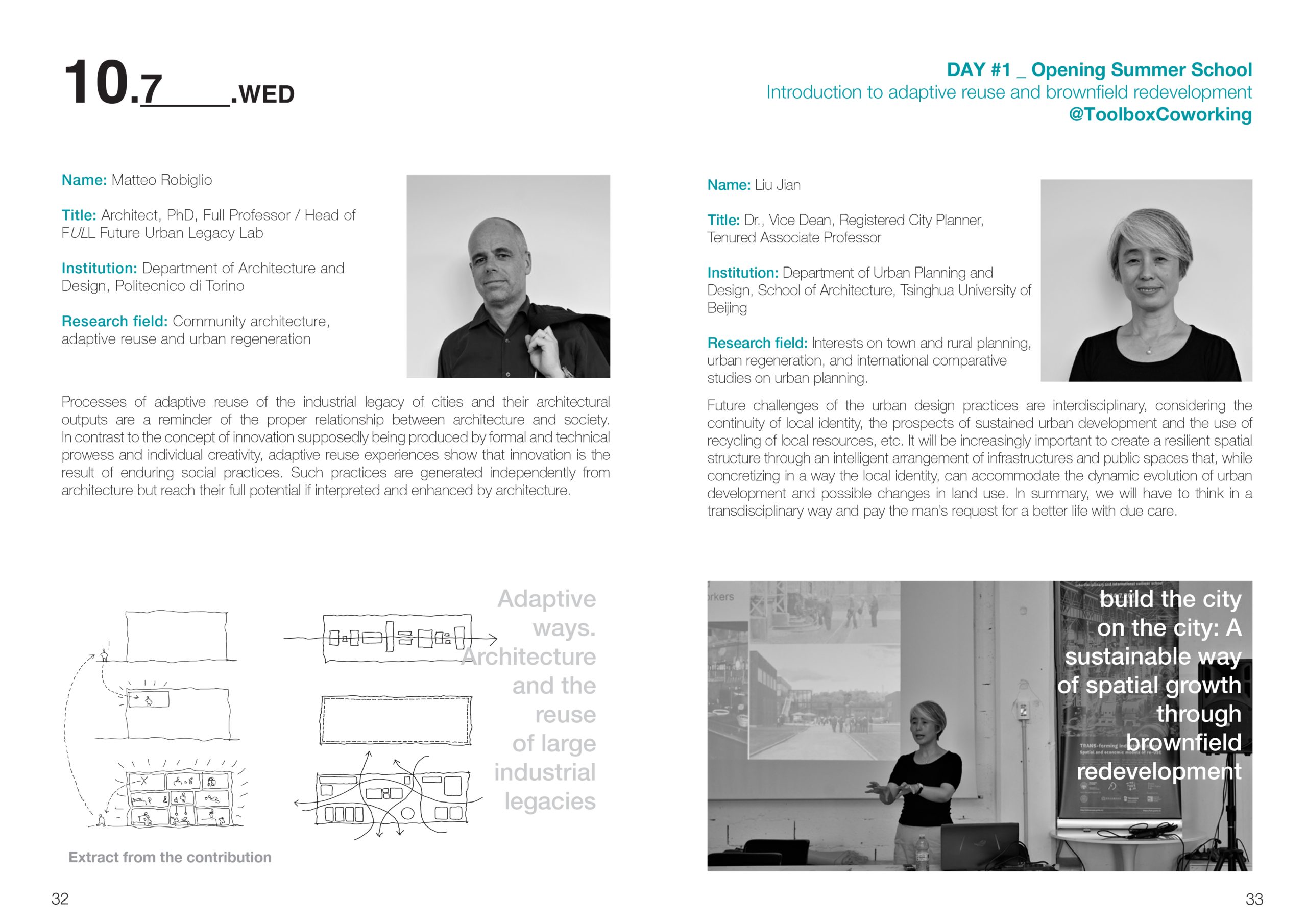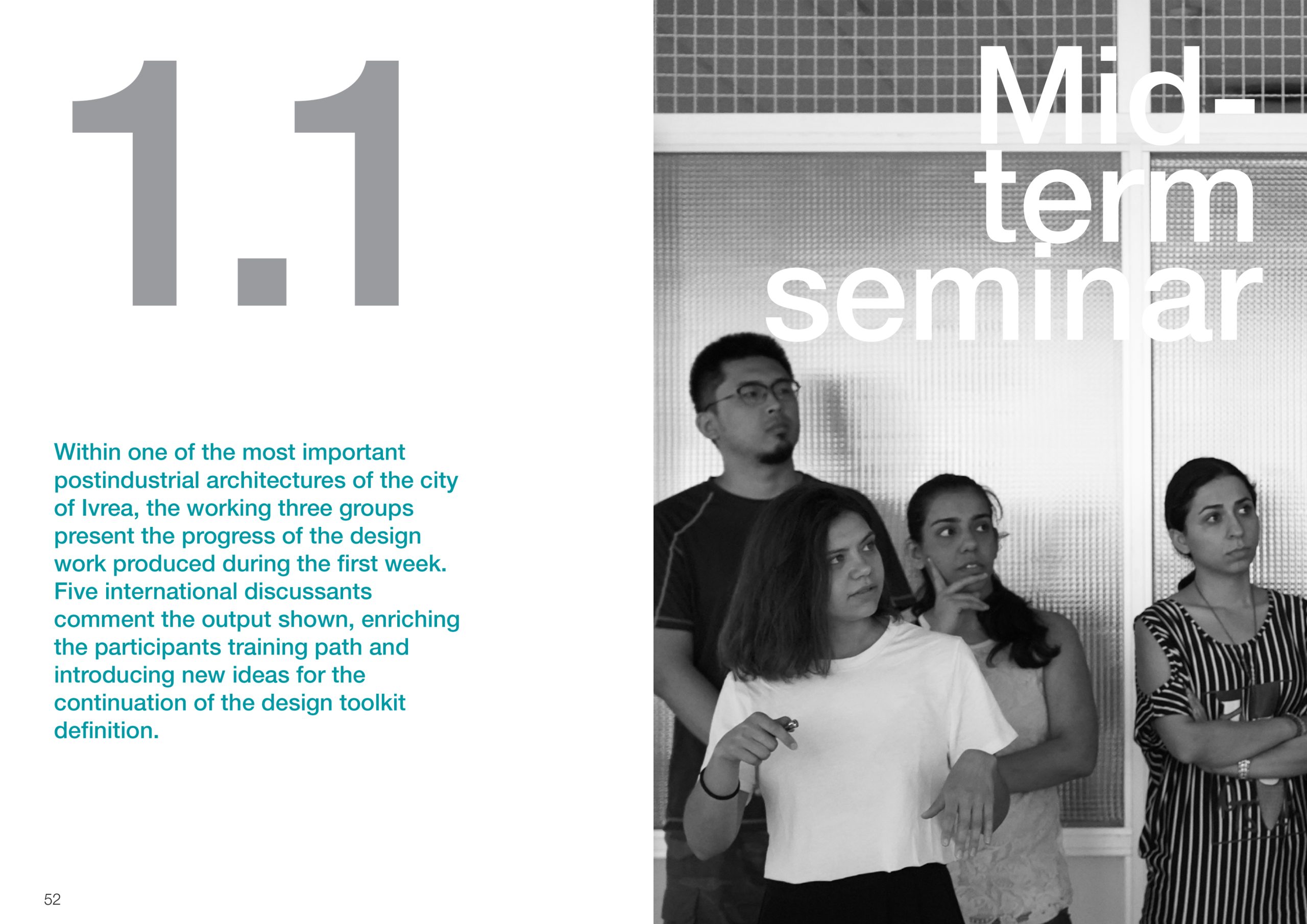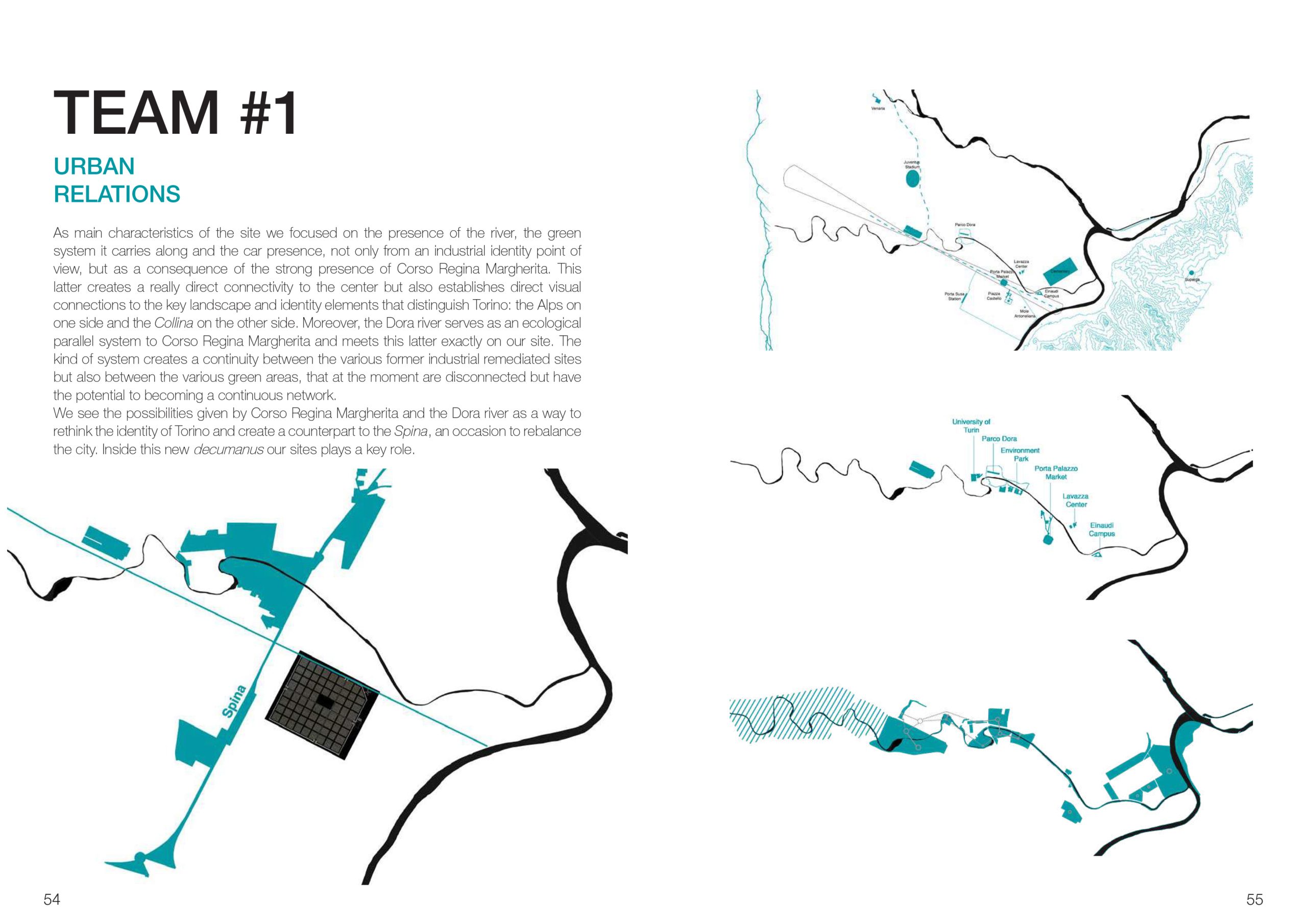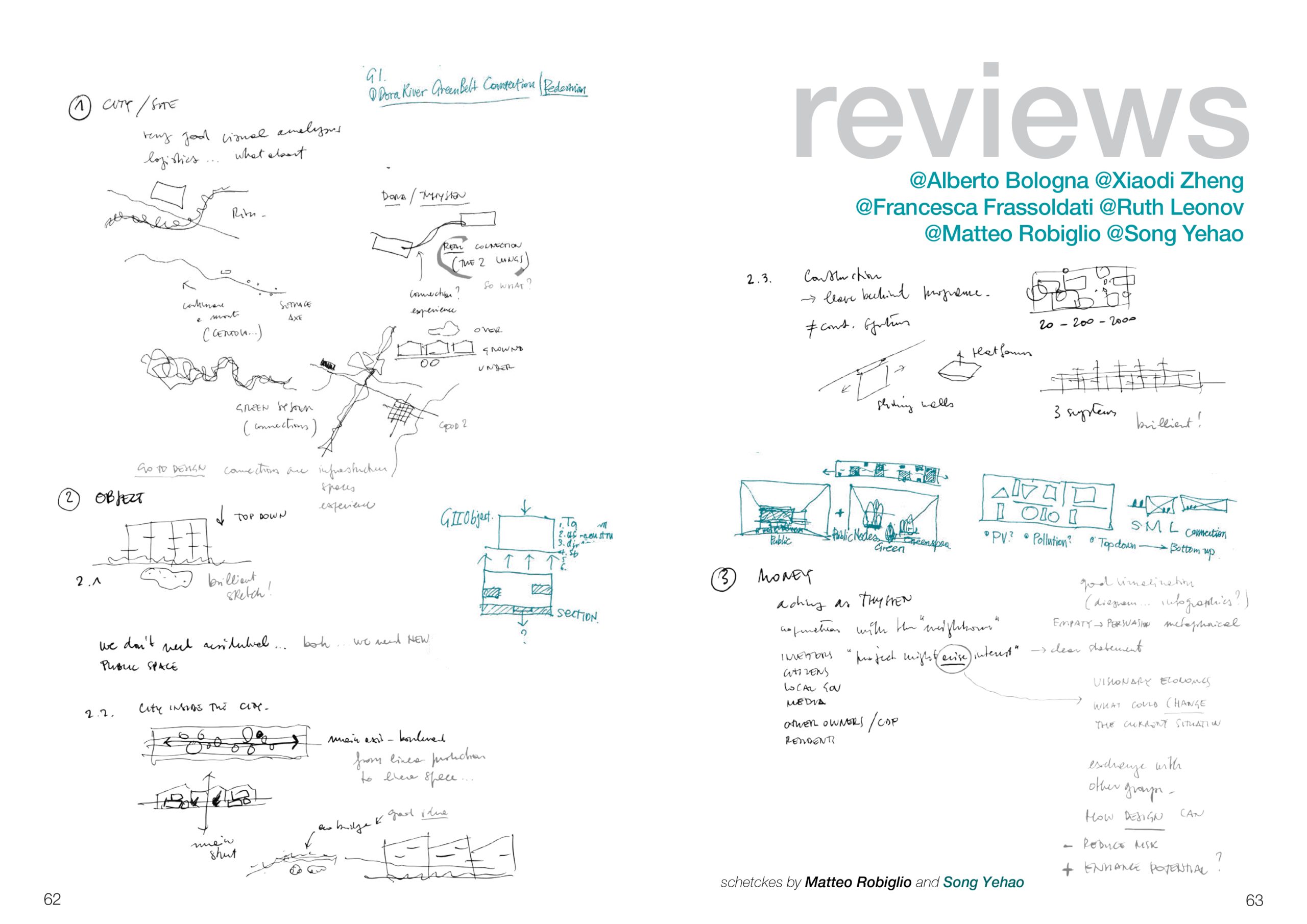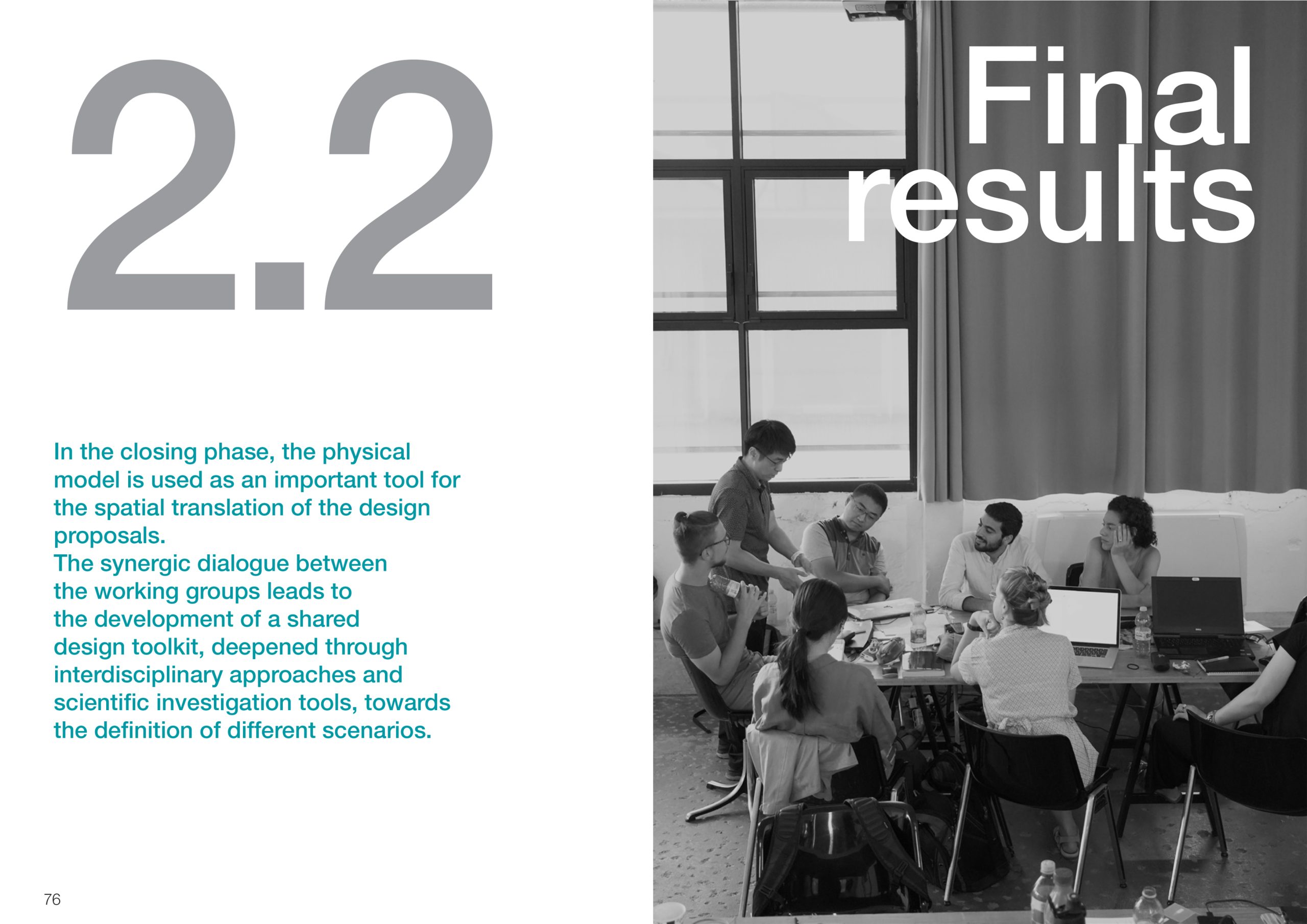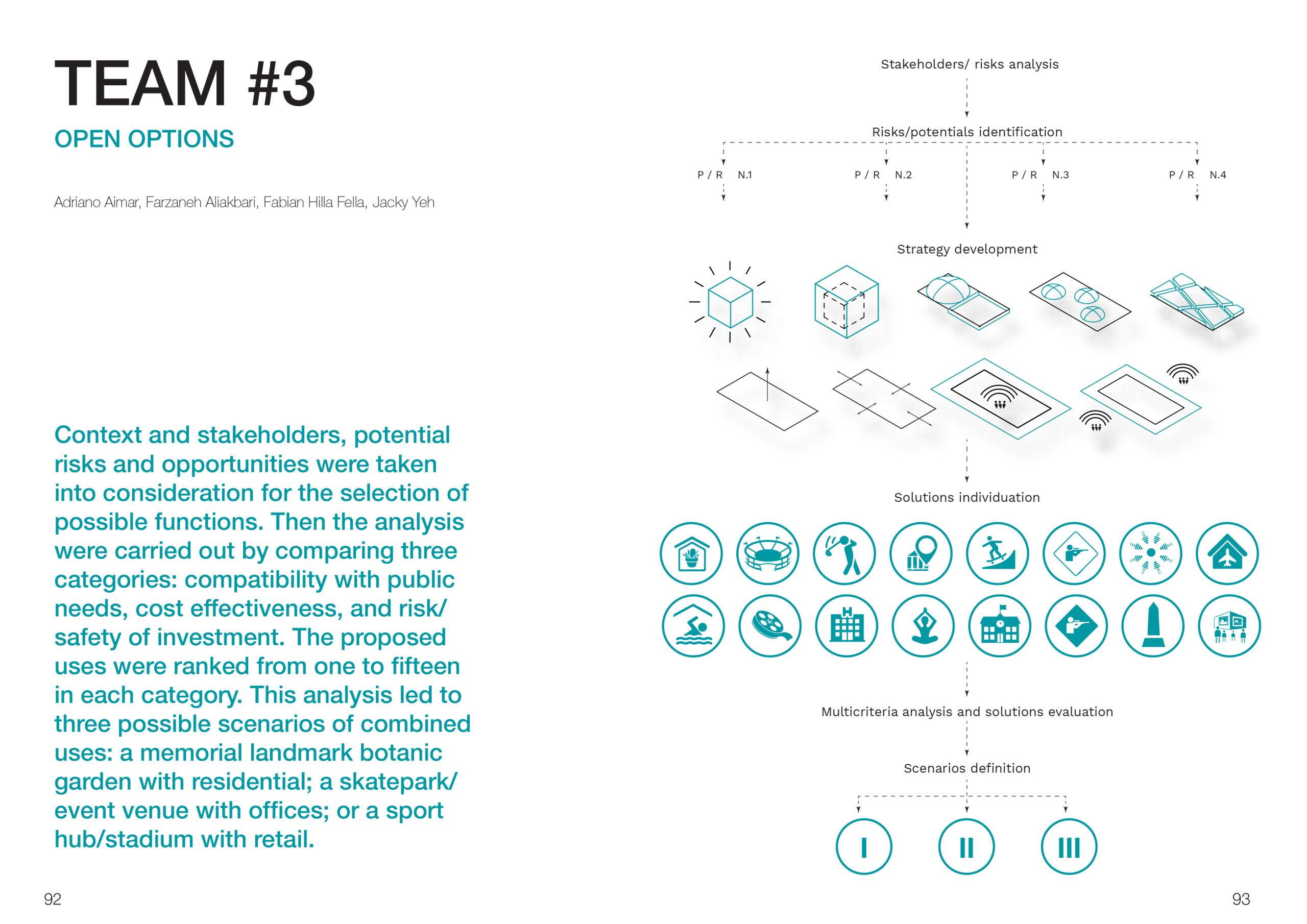TRANS-USE
TRANS-forming industrial legacy Spatial and Economic models of re-USE
Since uncertain conditions and risky decisions to be made for transforming existing cities have become the
norm worldwide, trans-disciplinary innovative approaches and analytical tools should be experimented. Architectural and urban design options dialogue with environmental engineering practices and large amount of information and spatial data for the place are reconnected to regional trends, urban economics and management, reconsidering industrial production.
The interdisciplinary and international summer school “TRANS-forming industrial legacy. Spatial and economical models of re-USE” has been conceived and organized by the China Room research group and the FULL interdisciplinary research center (Politecnico di Torino). It involved the active co-participation of teachers, tutors and students of the School of Architecture, Environmental Science School, Department of Leadership and Organization Management of the School of Economics and Management of Tsinghua University in Beijing, and Faculty of Architecture and Town Planning of Technion Israel Institute of Technology. The goal was the construction of spatial and economic models concerning the sustainable reuse of urban industrial legacies.
The educational and applied research program (carried out through the “research by design” method) explored during the summer school is based on two assumptions:
1. the activity of production (industry) is a significant mechanism for the transformation of the contemporary city. In our reasoning, every sector, both manufacturing and services, will be taken into consideration;
• identify the spatial transformations due to the change of the productive activities;
• test methodologies to measure and represent the characteristics and transformations of production in the urban environment;
• clarify the role of industrial legacy in the change of production and its relations with urban transformations at different scales.
2. the current relationship between city and production is connected to the legacies of the past, whether they are evaluated as positive or not.
Starting from these two considerations, the interdisciplinary scientific and educational program built interactions and synergies by addressing the following issues and objectives: • understand how production has changed and what are the current relationships between production and city (both in morphological features and in socio-economic variables);
The set of these objectives has been pursued during the summer school by interweaving theoretical-methodological research with an applied “research by design” activity settled for students with different backgrounds, in which economic models, production managerial and architectural, construction, technological and infrastructural solutions were experimented together, within urban transformation. The training activities of the summer school were divided into theoretical frontal lessons, tutoring activities and sites visits, as subject of the design survey. Starting from the analysis of renowned examples of urban industrial legacy, participants progressively built a design toolkit (in organizational, architectural, urban, construction, environmental and economic sustainability terms) which higlights future scenarios for the former ThyssenKrupp area in Torino, while the theoretical contributions provided by international professors from different scientific and disciplinary sectors aimed at setting up a methodological framework of scientific investigation.
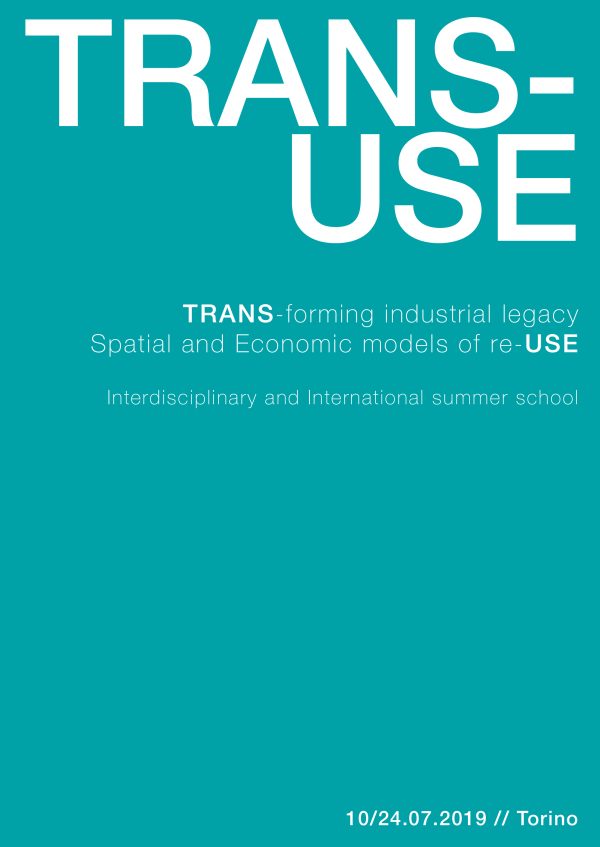
Date
2019
Scientific committee
Matteo Robiglio, Francesca Frassoldati, Michele Bonino, Alberto Bologna, Liu Jian
Category
School report
Tags
#Architecture #Reuse #NonPerformingLegacies #IndustrialLegacy
Promoted by
Politecnico di Torino, China Room, Future Urban Legacy Lab, Technion Israel Institute of Technology, Tshighua University
Supported by
Acciai Speciali Terni

